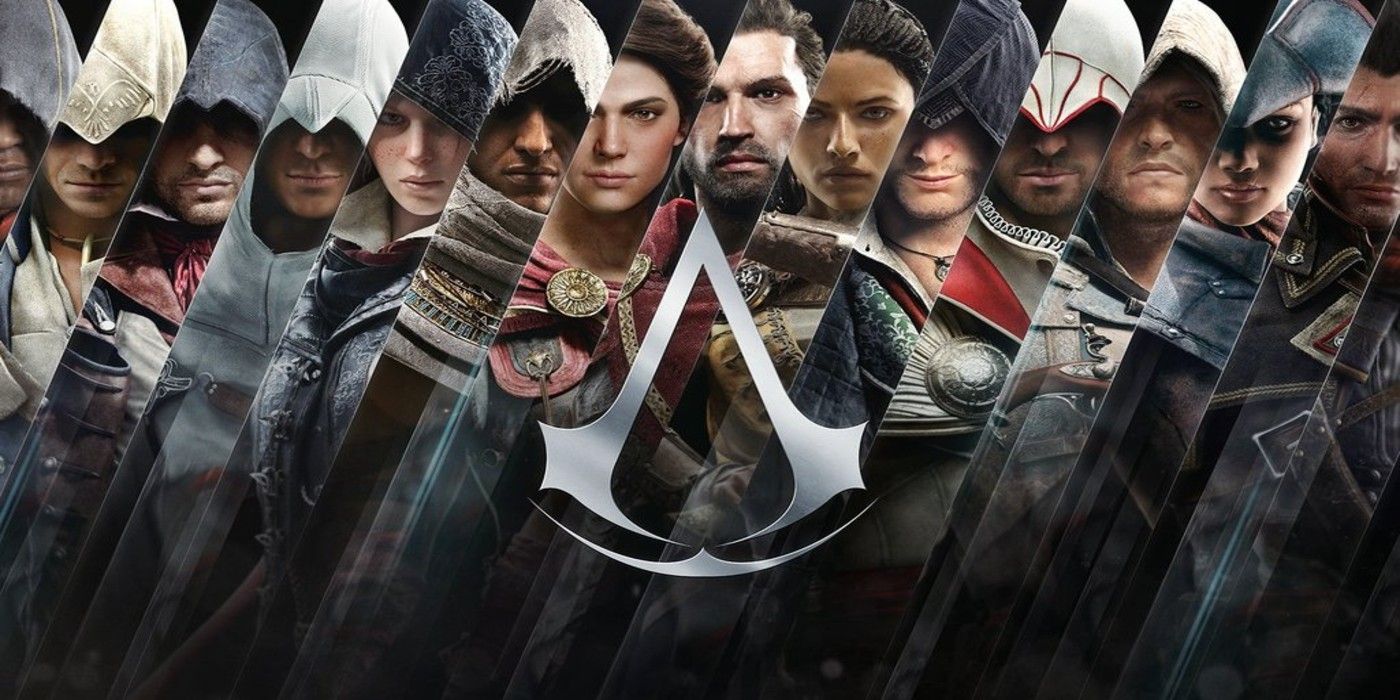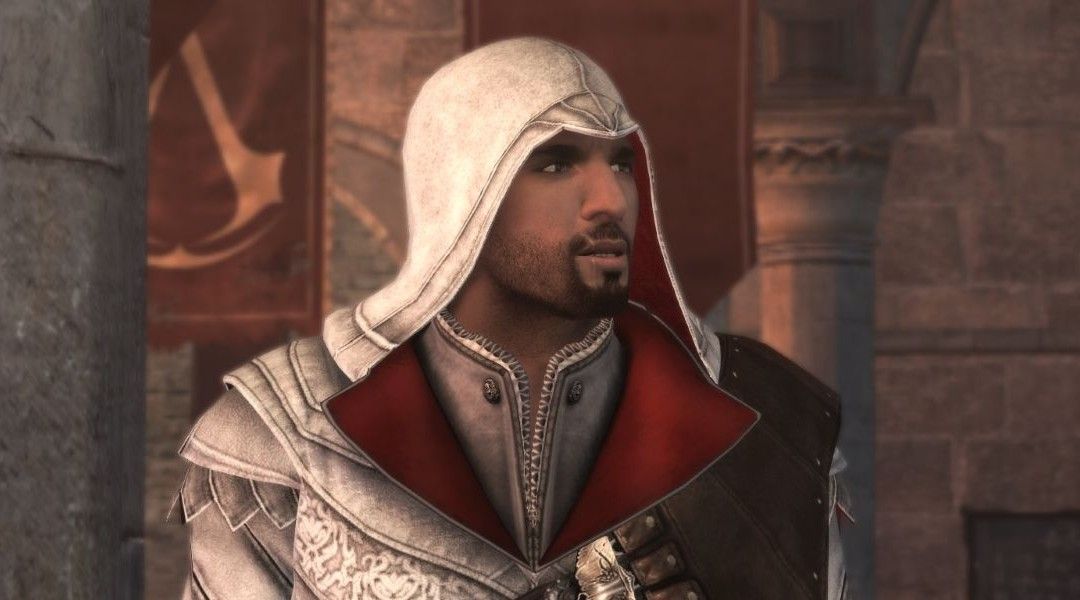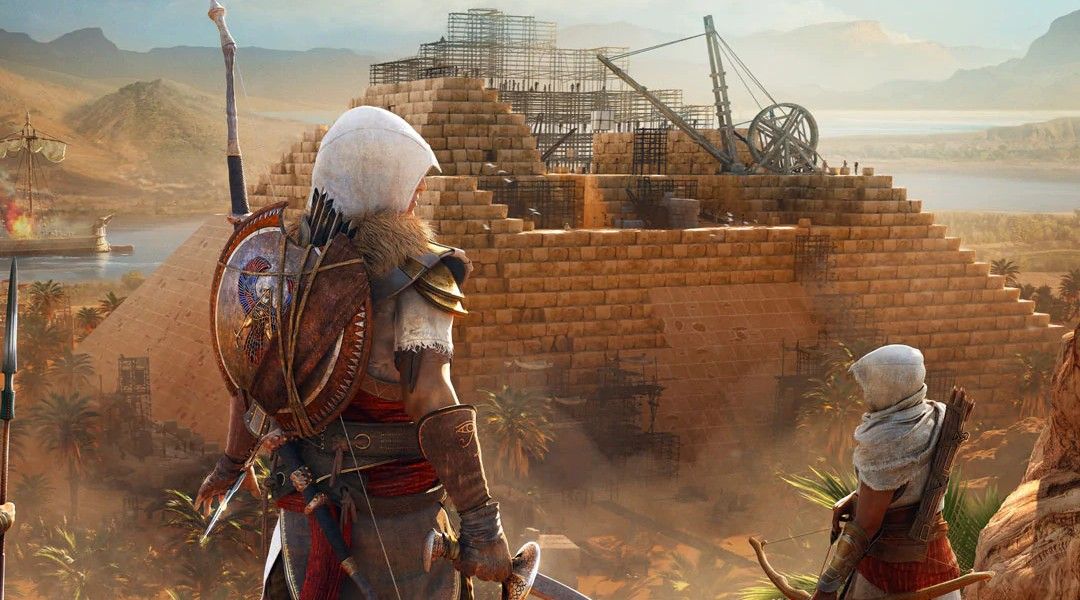Assassin's Creed Day 2019: How The Franchise Has Evolved And Changed

When someone says what their favorite Assassin’s Creed game is, whatever game they pick represents a drastically different version of the franchise. Originally a game involving primarily stealth-based gameplay and a limited set of climbing mechanics, future Assassin’s Creed games range from stealth-action to straight up RPG games set in continuously bigger worlds. Though the gameplay for the series morphed dramatically over the years, the franchise has kept two constants - a science fiction story based in the modern world that spreads back through time and a deep dedication to representing an alternate history of significant events that are as authentic as possible in comparison with its source material.
In regards to gameplay, 2007’s Assassin’s Creed was a familiar game with new technology. Stealth games have been around for generations before this game, with other games like Ubisoft’s own Splinter Cell (for the original Xbox, GameCube and PS2 generation), to the stealth genre’s premiere series, Metal Gear, years before then.
The main difference between Assassin’s Creed and its stealth game ancestors was the fact that the Altair storyline took place during the Third Crusade as opposed to the modern day. The reason this was so significant, compared to the narratives of Splinter Cell or Metal Gear, was the fact that technology like guns could not be used in the game’s world. The main objective for the player was to assassinate their in-game target by getting up-close. Blades are a key object and icon in the lore of Assassin's Creed for this reason. But, as with any game, its sequel started to lay the foundation for the changes to come for the future of the franchise.
Altair was a very capable and agile assassin who was dedicated to his craft but, due to the limitations of development at the time (the PS3 and Xbox 360 were still relatively new), he was not able to swim. Any contact with deep water meant immediate death for poor Altair.
When swimming was introduced as a feature for new assassin, Ezio, in Assassin's Creed 2, it not only filled in a missing feature of the original game but it also foreshadowed to one of the core pillars of the entire franchise - water-based combat and travel. Small rowboats were also a new addition and represent the small seed of a mechanic that would grow into the giant naval battles featured so prominently in the future games of the series.

The second major innovation for the series was the Villa Auditore management mechanic in which the player had to save up resources in order to upgrade parts of Ezio’s family villa, in turn granting him more abilities and earning him more money. This feature made way for crew management in Assassin’s Creed Brotherhood, and, more directly, the train headquarters management system in Assassin’s Creed Syndicate.
The third major implementation in Assassin’s Creed 2 came from the alternate history version of Leonardo Da Vinci himself, the hidden gun. Though a rudimentary device that only allowed one shot at a time, this foreshadowed the advances in gun technology from the real world that would be implemented in future Assassin’s Creed games.
Assassin’s Creed 3, though faithful in its depiction of the American Revolution, was unfortunately caught in the midst of franchise fatigue which arguably started with the release of Assassin’s Creed Revelations. With the games staying largely the same, and only expanding in map size, fans eventually started to fall off of the series and Ubisoft could tell. However, this game did introduce sea battles for the first time in the series, which is significant.
With that in mind, Ubisoft then set out to make the next installment, Assassin’s Creed Black Flag, as fun and innovative as it could be. Ditching a lot of science fiction exposition for all-out pirate adventures, Ubisoft created a game in which sea battles were of primary focus, making this entry in the series one of the more well liked in the franchise. The sea battles featured in Black Flag would lay out a blueprint for the epic naval battles featured in Assassin’s Creed Odyssey.
Moving toward another sequel, Assassin’s Creed Unity marked an interesting but unfortunate point in the series. Unity introduced new mechanics that were meant to freshen up the age-old Ubisoft formula of storming district towers or the like, such as those found in the Far Cry series. This included optional contextual actions, like stealing a door key from a palace guard or gaining access to an underground passage, which were meant to make the main infiltration loop of the game more fun and varied. Optional objectives like these would also make their way into Assassin’s Creed Odyssey.
However, Assassin’s Creed Unity suffered for reasons related to its performance. The game was quickly made into a hotbed for internet memes that made fun of all of the game’s bizarre technical glitches and mishaps that plagued it at launch, like its terrible framerate issues and missing face animations. In response, Ubisoft offered purchasers of the game download keys to its other titles released at the time as an apology. Though Assassin’s Creed Syndicate was not as badly received as Unity, it still could not bring the series back to its glory days.
While Unity suffered, it made the series take on a new genre - the RPG. It implemented a skill tree to complement various player styles. Upgrading equipment and weapons by level also started to become more of a central focus for the series. Syndicate refined this further but the fantastical elements that the series has recently been known for started with Assassin’s Creed Origins.

Origins was yet another turning point for the series, perhaps being the title that relies on the modern day Abstergo storyline the least, opting instead to include the likes of ancient Egyptian gods and goddesses. Due to Syndicate’s Victorian England setting, combat mainly relied on punching, stabbing, and whacking. With Origins, combat has once again been expanded to include all sorts of weapons, catering to many different play styles. One of the key things Origins was missing was naval combat, a well-liked feature from previous Assassin’s Creed games like Black Flag.
Combining all of those beloved features and innovations has led Ubisoft to create one of the most successful turnarounds in the video game industry in the form of Assassin’s Creed Odyssey. Though different in many ways from the first game in the series, Odyssey has adopted all of the best aspects of its predecessors. It retains the stealth-based combat that originated in the first game. It has a version of the crew management system and the district control mechanics found in the Ezio trilogy. It updated the ship mechanics from Assassin’s Creed 3 and Black Flag. It has a deeply iterated version of the skill tree introduced in Unity and updated combat mechanics from Origins. It mixes all of the best qualities of the Assassin’s Creed series making it the quintessential Assassin’s Creed game.
With rumors of a new Assassin’s Creed game involving Vikings, hopefully the series can continue to innovate.
Assassin’s Creed Ragnarok is rumored to be in development.

Post a Comment